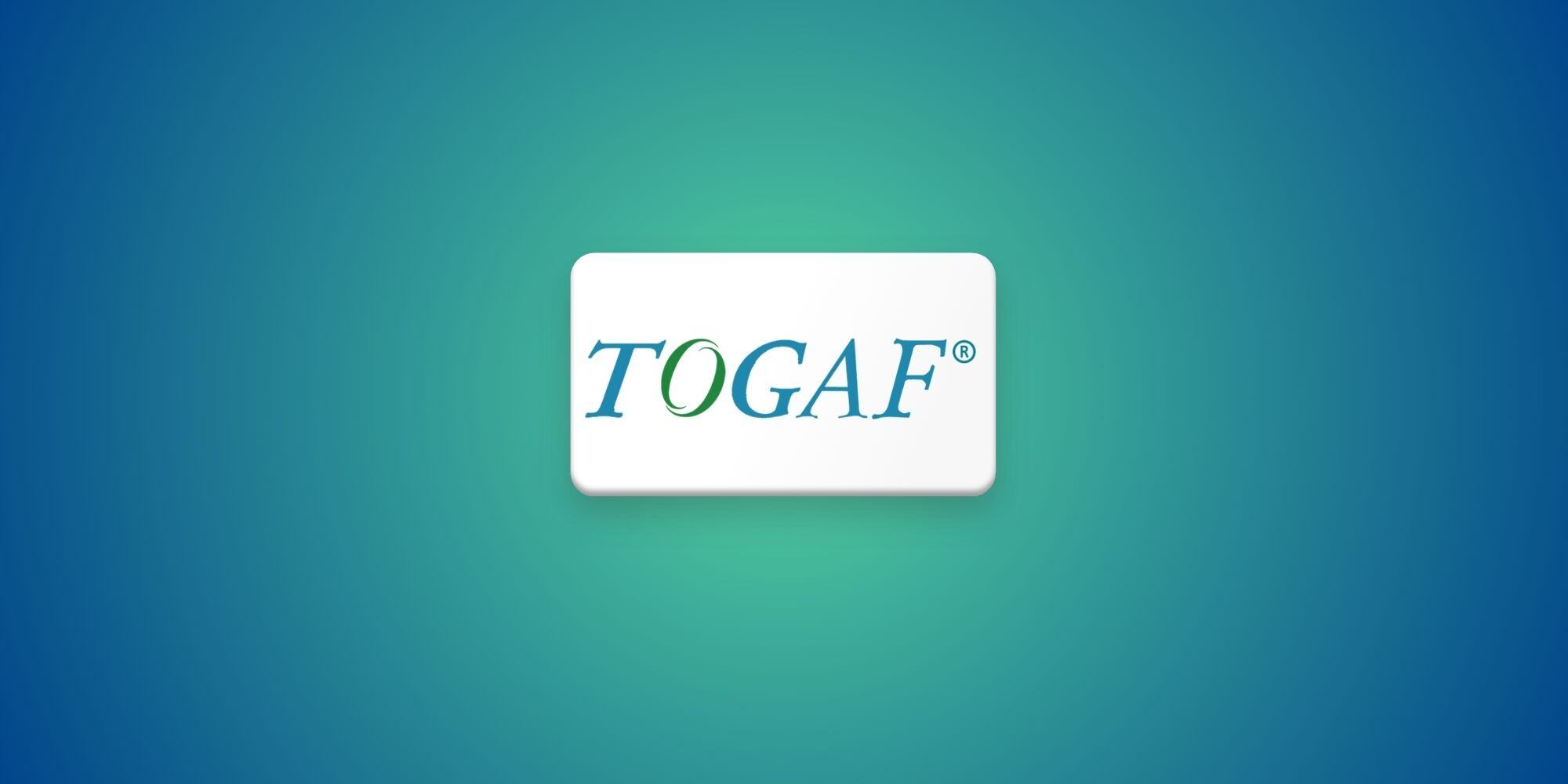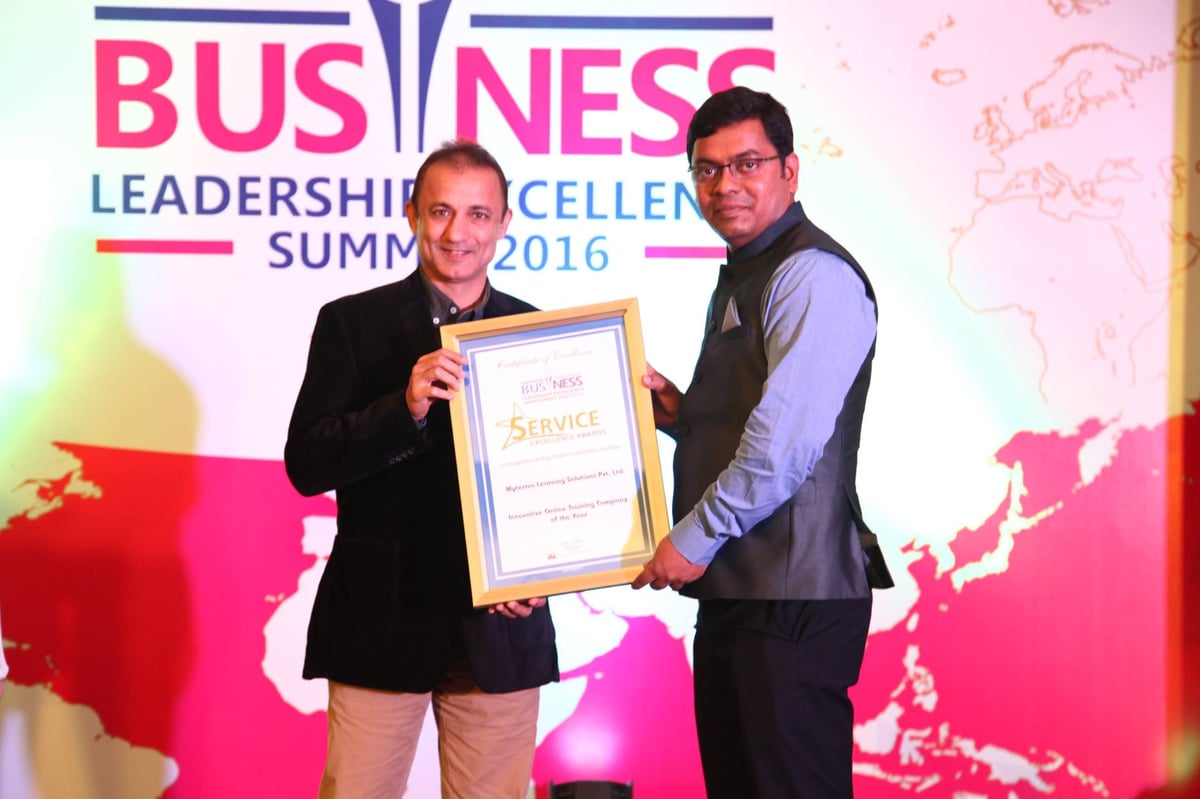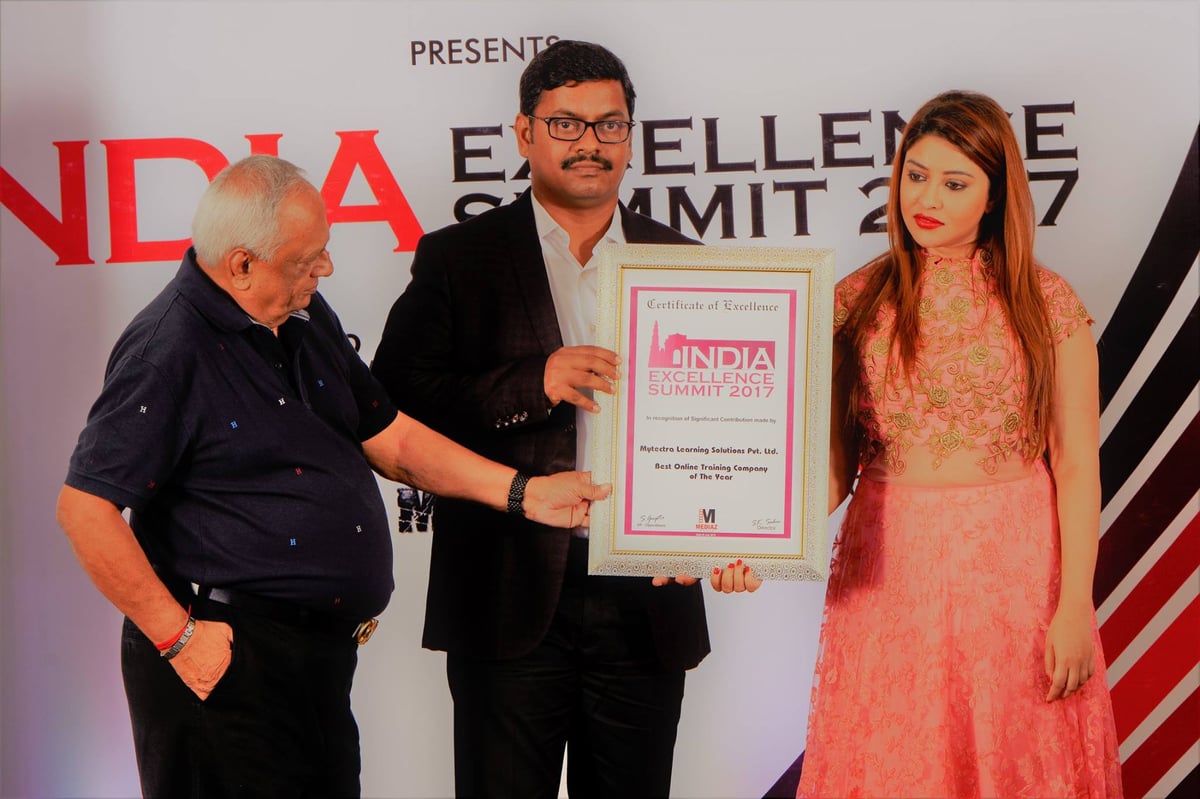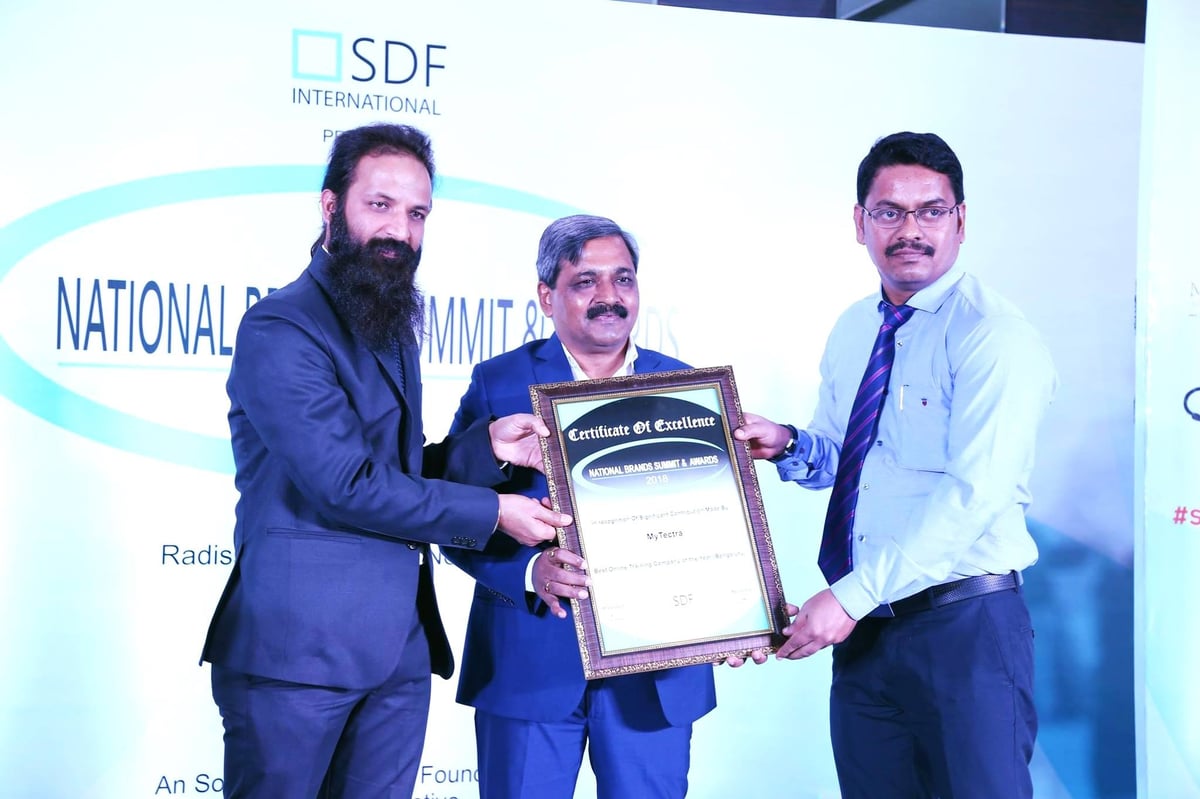TOGAF Training in Singapore
Learn virtually anywhere. Start your TOGAF online training now!

Course Features
Expert Instructors
Real-Time Projects
Verified Certificate
100% Placement
An Award Winning Company





About Program
Course Description
TOGAF® is an enterprise architecture methodology that helps businesses align their objectives in a way that benefits enterprise software development. It is a vendor-neutral framework that is held at high standards by several organizations all over the globe.
Why Learn TOGAF Training?
After successful the completion of the TOGAF Training by myTectra, you will be able to:- Understand the requisite knowledge of TOGAF Training Standards and Enterprise Architecture
- Successfully clear TOGAF Training Level 1 and Level 2 certification exam
Who should go for this TOGAF Training?
The target audience for Level 1 includes:- IT Professionals who are working in roles associated with an architecture project such as those responsible for planning, execution, development, delivery, and operation.
- Solution / Technical Architects who are looking for a first introduction to TOGAF Training.
- Solution / Technical / Enterprise Architects who want to achieve certification in a stepwise approach. The target audience for Level 2 includes:
- IT Professionals who are working in an organization where TOGAF Training has been adopted and who need to participate in architecture projects and initiatives.
- Solution / Technical / Enterprise Architects who would be responsible for developing architecture artifacts.
- Solution / Technical / Enterprise Architects who wish to introduce TOGAF Training as an architecture practice.
- Solution / Technical / Enterprise Architects who want to achieve a recognized certification to demonstrate their detailed knowledge of TOGAF.
- What are the pre-requisites for this Course?
- No prerequisites or prior experience needed to take and successfully complete this course. However, experience in Enterprise Architecture would be helpful.
Sign Up Now!
Course Details
Introduction
Learning Objectives: Understand The Open Group TOGAF Certification for People program, levels for certification, paths for certification, and the requirements for certification.
Topics:
- About TOGAF and the Open Group
- The Training Course, TOGAF Structure
- Structure of the Training.
Core Concepts
Learning Objectives: Basic concepts of Enterprise Architecture and TOGAF, Core concepts of TOGAF, and understand the key terminology of TOGAF.
Topics:
- Definition of key concepts and terms, TOGAF
- Architecture Framework
Introduction to the ADM
Learning Objectives: Understand the Architecture Development Method (ADM) cycle, the brief objective of each phase in the cycle, and how to adapt the ADM and ADM architecture scope and its integration.
Topics:
- Overview of the TOGAF ADM
- Objectives of each ADM Phase
- Architecture Development.
Introduction to the Architecture Content Framework
Topics
- Objectives of the Preliminary Phase
- Seven Aspects Defining the enterprise
- Identifying key drivers and elements
- Requirements for architecture work Framework to be used
- Relationships between management frameworks
- Evaluating the enterprise architecture maturity
- Inputs to the phase with key elements: Architecture Frameworks, Business principles, business goals, and business drivers
- Influence of pre-existing architectural inputs on phase
- Steps for Enterprise architecture team and organization, Set of Architecture Principles for a given scenario, Tailoring the framework,
- Outputs & Key Elements: Architecture Principles,
- Architecture Governance Framework,
- Request for Architecture Work.
Introduction to Enterprise Continuum & Tools
Learning Objectives: Understand the key concept of the Enterprise Continuum, its purpose, and its constituent parts.
Topics:
- Enterprise Continuum - Introduction & Usage, Re-use of architecture artifacts
- Constituents of the Enterprise Continuum
- Definition of the Architecture Continuum
- Stages of architecture evolution defined in the Architecture Continuum
- Solutions Continuum, Stages of architecture evolution defined in the Solutions Continuum
- Relationship between the Enterprise Continuum and the TOGAF ADM
Architectural Work Product
Learning Objectives: Understand the concepts of views and viewpoints, their role in communicating with stakeholders as well as applying them to the Architecture Development Cycle. Understand the concept of building blocks within TOGAF and the key deliverables of the ADM cycle.
Topics:
- Architecture Deliverables across the ADM cycle
- Define & understand relationships of key concepts like Stakeholders
- Concerns, Views, and Viewpoints
- Differentiate viewpoints,
- View Creation process
- Building block,
- Distinction between Architecture Building Blocks and Solution Building Blocks
- Use of building blocks in the ADM cycle.
Stakeholder Management
Learning Objectives: Understand how to apply the Stakeholder Management technique.
Topics:
- Steps in developing a Stakeholder Map
- Benefits of creating views
- Three example views provided by TOGAF
Architecture Patterns
Learning Objectives: Provide guidelines for using architecture patterns.
Topics:
- Architecture Patterns.
ARCHITECTURE PARTITIONING & ORGANISATION
Learning Objectives: Understand how Architecture Partitioning can be used to simplify the development and maintenance of enterprise architecture & the Architecture Repository, its constituent parts, and its relationship to other parts of TOGAF.
Topics:
- Architecture Partitioning
- The Architecture Repository
- Architecture Tools.
ARCHITECTURE CAPABILITY FRAMEWORK
Learning Objectives: Architecture Governance contribution to the Architecture Development Cycle, Phase G, the role of Architecture Capability Maturity Models & The Architecture Skills Framework.
Topics:
- Establishing an Architecture Capability using ADM
- Architecture Contracts - contents & relationship to Architecture Governance
- Architecture Maturity Models
- Capability Maturity Model
- CMMI process, structure and levels of the ACMM
- The role of Maturity Assessments in the ADM
- Architecture Skills Framework, including roles, skills and proficiency levels.
ARCHITECTURE GOVERNANCE
Learning Objectives: Understand The Open Group TOGAF Certification for People program, levels for certification, paths for certification, and the requirements for certification.
Topics:
- Architecture Board- establishment, responsibilities, factors for setting up & operations
- Architecture Governance - Concepts, Framework, Benefits
- Fitment within ADM Cycle and key success factors for putting Architecture Governance into practice.
ARCHITECTURE COMPLIANCE AND RISK MANAGEMENT
Learning Objectives: Introduction to the ADM Guidelines and Techniques.
Topics:
- Risk Management- characteristics & usage within the TOGAF ADM
- Risk monitoring
- Architecture Compliance - meaning & need an Architecture Compliance Reviews - process & usage
Architecture Principles
Learning Objectives: Introduction to the ADM Guidelines and Techniques & how to apply the Preliminary Phase in the development of an enterprise architecture.
Topics:
- Architecture Principles and where they are used within TOGAF
- Standard Template for Architecture Principles
- Good Architecture Principle
- Identify and establish a set of Architecture Principles for a given scenario
Architecture Development Method (ADM) - Preliminary Phase
Topics:
- Objectives of the Preliminary Phase
- Seven Aspects Defining the enterprise
- Identifying key drivers and elements
- Requirements for architecture work
- Framework to be used, Relationships between management frameworks
- Evaluating the enterprise architecture maturity
- Inputs to the phase with key elements: Architecture Frameworks, Business principles, business goals, and business drivers
- Influence of pre-existing architectural inputs on phase
- Steps for Enterprise architecture team and organization
- Set of Architecture Principles for a given scenario
- Tailoring the framework
- Outputs & Key Elements: Architecture Principles, Architecture Governance Framework, Request for Architecture Work.
Business Scenarios and Business Goals
Topics:
- Understand what a Business Scenario is and its purpose
- Understand where Business Scenarios are used within the ADM cycle
- Understanding the properties of a good Business Scenario
- Learn how to develop and validate a Business Scenario
Architecture Development Method (ADM) - Phase A: Architecture Vision
Learning Objectives: Understand how to apply Phase A in the development of an enterprise architecture.
Topics:
- Objectives of Phase A: Architecture Vision and Business Scenarios
- Typical contents of the Architecture Repository - stakeholders, concerns and business requirements
- Business Transformation Readiness Assessment
- Risk Assessment
- Statement of Architecture Work
- Capability Assessment
- Architecture Vision and Communications Plan
- Security Architecture influences on this phase.
Architecture Implementation Support Techniques
Learning Objectives: ADM Guidelines and Techniques, Phase A, Phase B & Phase F in development of enterprise
Architecture and Phase E and F for migration planning.
Topics:
- Gap Analysis- purpose & technique
- Migration Planning Techniques
- Implementation Factor Assessment
- Deduction Matrix
- Consolidated Gaps & Solutions
- Dependencies Matrix
- Architecture Definition Increments Table
- Transition Architecture State Evolution Table in conjunction with the TRM
- Business Value Assessment Technique
- Interoperability Requirements
- Use of Interoperability Requirements within the TOGAF ADM
- Reconciliation of Interoperability Requirements with potential solutions
- Business Transformation Readiness Assessment
- Business Transformation Readiness Program
- Business Transformation Readiness within the ADM
- Business Transformation Readiness Capability Based Planning
- Capability-Based Planning & application in an enterprise architecture context.
ADM - Phase B: Business Architecture
Learning Objectives: ADM phases - objectives and the approach for each phase & learning to apply Phase B in the development of an enterprise architecture.
Topics:
- Inputs to the ADM using Business principles
- Business goals and business drivers
- Three techniques for business modeling,
- Considerations for selecting reference models
- Viewpoints and tools
- Technique of Gap Analysis
- Building blocks in the development of the Business Architecture
- Understand the outputs using Business Architecture components of the Architecture Definition Document
- Business Architecture components of the Architecture Requirements Specification & Security Architecture influences on this phase
ADM - Phase C: Information Systems Architecture
Learning Objectives: ADM phases & application of Phase C (Data Architecture) in the development of an enterprise architecture.
Topics :
- Information Systems Architectures
- Approach recommended by TOGAF like Key considerations for the Data Architecture & Architecture Repository
- Phase C: Information Systems Architectures - Data Architecture, Implementation order of the Data and Application Architectures
- Inputs to the phase and Data Principles
- Steps & considerations for selecting reference models, viewpoints and tools
- Outputs using Data Architecture components of the Architecture Definition Document
- Data Architecture components of the Architecture Requirements Specification & Security Architecture influences on this phase
- Phase C: Information Systems Architectures - Application Architecture, inputs & Application Principles
- Steps & considerations for selecting reference models, viewpoints and tools
- Outputs using Application Architecture components of the Architecture Definition Document
- Application Architecture components of the Architecture Requirements Specification & Security Architecture influences on this phase
Foundation Architecture TOGAF TRM
Learning Objectives: The purpose of this Learning Unit is to help the Candidate have a detailed understanding of the TOGAF Technical Reference Model (TRM).
Topics :
- Understanding the role of the TRM as a Foundation Architecture
- Familiarising the major characteristics of a Foundation Architecture
- Briefly understanding the basic concepts of the III-RM
- Briefly learning the relationship of the III-RM to the concept of Boundaryless Information Flow
- Understanding the TRM graphic, including the following key elements :Application Software Categories, Application Platform Interface, Application Platform
- Communications Infrastructure Interface, Qualities
- Briefly understanding the structure of the TRM Briefly exploring the main architecture objectives of using the TRM
- Understanding about the Platform Services Taxonomy
- x)Understanding about the Service Quality Taxonomy Understanding how to customize the TRM to meet an organization's specific needs.
Integrated Information Infrastructure Reference Model
Topics :
- Understanding the business and technical drivers for Boundaryless Information Flow
- Learning how the III-RM fulfills the solution space for Boundaryless Information Flow
- Briefly understanding the high-level structure of the III-RM, III-RM graphic, Business Applications, Infrastructure Applications, Application Platform, Interfaces, Qualities
Phase D: Technology Architecture
Learning Objectives : Understand how to apply Phase D in development of an enterprise architecture.
Topics :
- Understanding the main objectives of the Phase D
- Briefly learning the approach to the phase including using the Architecture Repository
- Understand the inputs to the phase and explain the following key elements:Technology Principles
- Understand the steps involved and being able able to: Learning how the TRM can be used when developing a Technology Architecture, Learning the role of ABBs
- Understand the outputs and be able to explain the following key elements:Technology Architecture components of the Architecture Definition Document, Technology Architecture components of the Architecture Requirements Specification
- Understand the Security Architecture influences on this phase
ADM - Phase E: Opportunities and Solutions
Learning Objectives : Understanding how to apply Phase E in development of an enterprise architecture.
Topics :
- Understanding the main objectives of the Phase E
- Briefly learn the approach to the Phase E
- Understand the management frameworks that have to be coordinated within this phase
- Learn how business value is assigned to each work package
- Understand the steps to prioritize the migration projects
- Understand the steps to confirm the Architecture Roadmap
- Learning key outputs of this phase specifically: Implementation and Migration Plan, Architecture Definition Document, including Transition Architectures (if any) and Understanding the Security Architecture influences on this phase
ADM - Phase F: Migration Planning
Learning Objectives : Understand how to apply Phase F in the development of an enterprise architecture.
Topics :
- Architecture Board,
- Briefly learn the need for establishment of an Architecture Board
- Understand the responsibilities of an Architecture Board
- Discuss the factors that should be considered when setting up an Architecture Board
- Learn how to operate an Architecture Board
- Architecture Governance
- Briefly learn the concept of Architecture Governance
- Describe the main concepts that make up an Architecture Governance framework
- Understanding why Architecture Governance is beneficial,
- Understanding how Architecture Governance fits within the ADM cycle
- Understanding the key success factors for putting Architecture Governance into practice
ADM - Phase G: Implementation Governance
Learning Objectives :Understand how to apply Phase G in development of an enterprise architecture.
Topics :
- Understand the main objectives of the phase
- Briefly learn the approach to this phase
- Understand the inputs to the phase
- Understanding the steps involved and being able to describe the following: Explain how to tailor and conduct an Architecture Compliance Review
- Understand the outputs and be able to explain the following key elements:The contents of Architecture Contracts, Their relationship to Architecture Governance
- Understanding the Security Architecture influences on this phase
- Demonstrate the role that risk monitoring plays in this phase
ADM - Phase H: Architecture Change Management
Learning Objectives : Understand how to apply Phase H in development of an enterprise architecture.
Topics :
- Understand the main objectives of the phase H
- Briefly learn the approach to the phase,including: Drivers for change Enterprise architecture management process
- Guidelines for maintenance versus architecture redesign
- Understand the inputs to this phase for better understanding of Change Requests
- Understand the steps involved in Architecture Board meetings
- Understanding the outputs and be able to explain when the following might occur
- Updated Architecture Contracts
- A new Request for Architecture Work
- Understanding the Security Architecture influences on this phase
Architecture Requirements Management
Learning Objectives : Understand how to apply the process of managing architecture requirements.
Topics :
- Briefly understand how Requirements Management fits into the ADM cycle
- Requirements Management process
- Approaches to Requirements Management
- Understand the inputs to the phase
- Understand the steps and their correspondence to phases
- Understanding how the Requirements Management steps correspond to ADM phases
- Understanding the purpose of the outputs of Requirements Management
- Understanding the Security Architecture influences on the requirements captured
ADM Iteration and Levels
Learning Objectives : The purpose of this Learning Unit is to help the Candidate understand how to apply iteration and different levels of architecture with the ADM.
Topics :
- Understanding the concept of iteration and how it applies to TOGAF
- Factors influencing the use of iteration
- Learning some suggested iteration cycles
- Understanding how the ADM supports different types of engagements within the organization
- Learning how to apply iteration cycles to the ADM phases
- Understanding how the concepts of levels and the Enterprise Continuum are used to organize the Architecture Landscape
- Identify the different levels of architecture that exist in an organization
Security Architecture and the ADM
Learning Objectives : Understand the security considerations that need to be addressed during application of the ADM.
Topics :
- Understand the responsibility that Enterprise Architects have towards Security Architecture and the recommended Security adaptations to the ADM
Using TOGAF to Define & Govern SOAs
Learning Objectives : Understand how the ADM can be adapted for the SOA style of architecture.
Topics :
- SOA as an architectural style
- Understanding how enterprise architecture supports SOA
- Recommended SOA adaptations to the ADM
Testimonials
I have done a Python and Jango course in mytectra. myTectra helped me to clear his all doubt with real-time examples. myTectra helped me so much which helped me to be placed in good MNCs. myTecra helped to clear all his doubts.
Siddu
Python developer
I did the Python & Django course in myTectra. myTectra also gave me the opportunity to work on a real-time project which helped me a lot to get my concept throw. They also provided me the placement in the company for the course I did in mytectra.
Prinjal
Python
I have a good learning experience with myTectra learning solutions and I took Python training under Santosh sir. He teaches both practical and theoretical concepts with live examples, which greatly enhances understanding.
Sai Nagendra
Python
I did Machine Learning(ML), Artificial intelligence(AI), and python courses under the trainer Niraj in mytectra. Due to the standards of the teachings and learning environment of myTectra it made wonders for my future.
Harish Kumar
AI, Ml & Python
Reviews
Ask for Free Demo Now!
Yes, I want a demo!
FAQ's
What is TOGAF and why is it important?
TOGAF (The Open Group Architecture Framework) is a comprehensive framework for enterprise architecture that provides an approach for designing, planning, implementing, and governing enterprise information technology architecture. It is important because it helps organizations align IT strategy with business goals, ensuring efficient and effective use of technology.
What are the benefits of taking TOGAF training online?
Taking TOGAF training online offers flexibility to learn at your own pace and convenience, along with access to expert instructors and resources from anywhere in the world. It also prepares you for TOGAF certification, enhancing your career prospects in enterprise architecture.
Will I get placement assistance?
myTectra is providing 100% placement assistance on our key courses. We help you with the career counselling, Exams on Key courses, Mock Interviews and Technical Interviews Tips. Landing an interview proves that you have the job-specific skills for the position, but how do your interview skills stack up? Also, Soft skills are often the most important factor in showing you're the best candidate for the job. Hence we are conducting FREE TRAINING on Soft-Skills worth Rs-25, 000 to all myTectra students which will help you to attend the interviews with more confidence.
Can I attend a demo session before enrollment?
Yes. We arrange a free demo for all the courses either in the Classroom or Live-Online demo. Please fill the demo request form below to schedule a free demo.
What if I miss a class?
You will never miss a lecture at myTectra. You can choose either of the two options:
Classroom Training:
- If you miss one or few classes we can give a backup class based on trainer and your convenient time.
- In case if you miss many classes, we can reschedule your class with upcoming batches or other running batches based on how many courses topics you have completed so far.
Live-Online Training:
- View the recorded session of the class available in your LMS.
- You can attend the missed session, in any other live batch.
What are the payment options?
Payments can be made using any of the following options and a receipt of the same will be issued to you automatically via email for both classroom training and Online training.
Visa Debit/Credit Card
American Express and Diners Club Card
Master Card
PayPal
Net Banking/Wire Transfer
UPI Payment such as Google Pay, PhonePe, Paytm
Cash/Cheque/DD ( Not for Online Training )
Where do the classes take place?
Classroom Training - Bangalore
Live-Online Training - Globally
For Corporates:
Classroom Training - We deliver classroom training for corporate in more than 20 countries. Send us an Enquiry Now!
Online Training - Globally
* All of the classes are conducted live online. They are interactive sessions that enable you to ask questions and participate in discussions during class time. We do, however, provide recordings of each session you attend for your future reference.
Who are the Trainers?
Our Trainer’s are chosen not only for their knowledge and expertise but also for their real-time experience in the respective courses.
What if I have more queries?
Just give us a CALL at +918047112411 OR email at support@mytectra.com
Related Blogs

Everythong you need to know about TOGAF Training
TOGAF (The Open Group Architecture Framework) is a widely used framework for enterprise architecture. It provides...

Upgrade Your Enterprise Architecture Skills with TOGAF Training: A Step-by-Step Approach
Enterprise Architecture (EA) is a critical component of digital transformation and the foundation for ...

TOGAF Interview Questions and Answers
Learn TOGAF Interview Questions with Answers prepared by real experts, helping you confidently clear your TOGAF interview.
